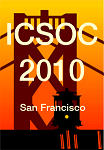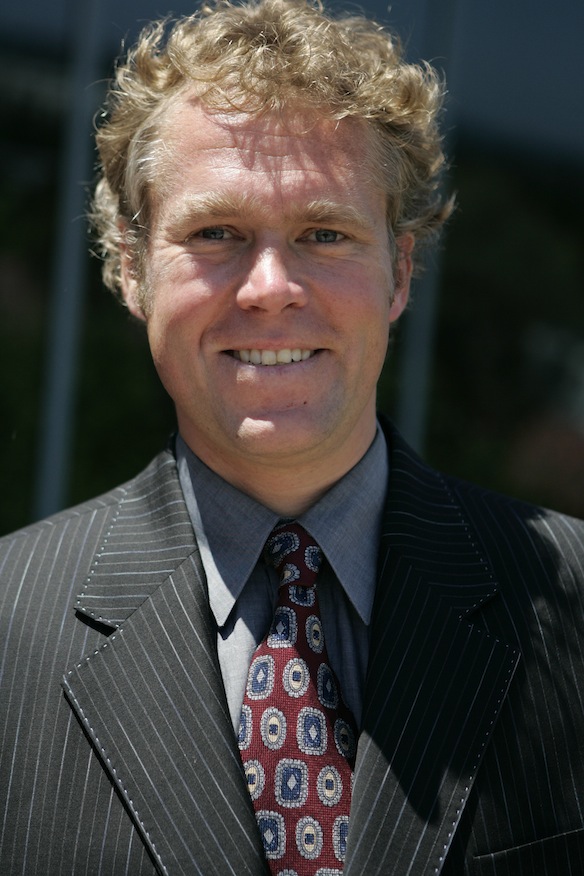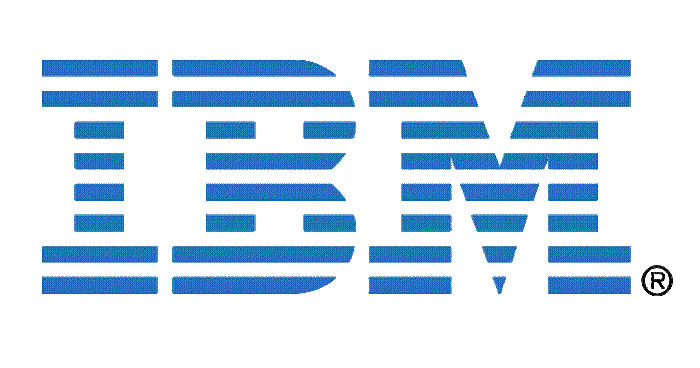
The Eighth International Conference on Service Oriented Computing
December 7-10, 2010, San Francisco, California
Keynotes
- Wednesday: Jim Spohrer, IBM Almaden Research Center: Service Science Progress and Directions
- Thursday: Prof. Larry Leifer, Stanford University: Dancing with Ambiguity
- Friday: Kaj van de Loo, SAP AG: SOA meets Reality - 10 Years of Lessons Learned
Speaker:
 |
Jim Spohrer Director of IBM University Programs World Wide (IBM UP)
|
Service Science Progress and Directions
Abstract:
Economists report the growth of the service sector globally. This trend is likely to continue, as technological advances improve productivity, lower transaction costs, and increase outsourcing opportunities. Service-Dominant Logic (Vargo & Lusch), service science (Spohrer & Maglio), and service network theory (Gummesson) are all research directions that shift the focus away from service versus manufacturing and towards a view of networks of entities interacting. Service system entities are complex systems with customers and other stakeholders (e.g., workers, investors, etc.). In this view, modern farms and factories are nodes in the global network of interconnected service system entities. Others complain that this view is overly general. In this talk, I will debate their view, arguing that generalizing "customer" to "stakeholder" is required in the practical design and management of all real-world processes and systems. Furthermore, sustainable innovation may require a focus on holistic service systems (e.g., cities, universities, luxury conference hotels, etc.). I will argue for the design of "ideal or reference" holistic service systems to accelerate learning and transfer of innovation between complex real-world system of systems that include transportation, water, food, energy, communications, buildings, retail, finance, health, education, and governance (security, development, laws). The focus is on improving quality of life: quality of service to customers, quality of jobs for workers, and quality of new opportunities for investors and other stakeholders.
Biography:
As Director of IBM University Programs World Wide (IBM UP), Jim works to align IBM and university ecosystems globally in five key areas: research, readiness (skills), recruiting, revenue, and responsibility (volunteerism). His current priorities include applying service science and high performance computing to modeling of universities and cities in order to improve sustainable innovation for regions. Previously, Jim helped found IBM’s first Service Research group, and was founding CTO of IBM’s Venture Capital Relations Group in Silicon Valley. During the 1990’s while at Apple Computer, he was awarded Apple’s Distinguished Engineer Scientist and Technology title for his work on next generation learning platforms. Jim has a PhD in Computer Science from Yale, and BS in Physics from MIT.
Speaker:
 |
Larry Leifer
Email: leifer@cdr.stanford.edu |
Dancing with Ambiguity
design thinking in theory and practice
Abstract:
Over the past thirty years, a powerful methodology for innovation has emerged. It integrates human, business and technical factors in problem forming, solving and design: “Design-Thinking.” This human-centric methodology integrates expertise from design, social sciences, business and engineering. It is best implemented by high performance project teams applying diverse points-of-view simultaneously. It creates a vibrant interaction environment that promotes iterative learning cycles driven by rapid conceptual prototyping. The methodology has proven successful in the creation of innovative products, systems, and services.
Design-thinking works. Industry is subscribing to boot camps and executive education workshops. Teams of industry, government and education experts are tackling complex problems and finding powerful solutions. The time is right to apply rigorous academic research to understand how, when and why design thinking works and fails. It is time to create next generation design thinking behavior and supporting tools.
Through courting ambiguity, we can let invention happen even if we cannot make it happen. We can nurture a corpus of behaviors that increase the probability of finding a path to innovation in the face of uncertainty. Emphasis is placed on the questions we ask versus the decisions made. A suite of application examples and research finding will be used to illustrate the concepts in principal and in action.
Keywords and Phrases:
Design Thinking, Design Research, Design Learning, Teamwork, Global, Collaboration, Coordination, Surprise and Delight, Instrumentation, Performance, Measurement, Corpus of Behavior, Corpus of Knowledge
Biography:
Larry Leifer is a Professor of Mechanical Engineering Design and founding Director of the Center for Design Research (CDR) at Stanford University. A member of the faculty since 1976, he teaches the industry sponsored master's course ME310, "Global Project-Based Engineering Design, Innovation, and Development;" a thesis seminar, "Design Theory and Methodology Forum;" and a freshman seminar "Designing the Human Experience." Research themes include: 1) creating collaborative engineering design environments for distributed product innovation teams; 2) instrumentation of that environment for design knowledge capture, indexing, reuse, and performance assessment; and 3), design-for-sustainable-wellbeing. His top development priority in the moment is the Hasso Plattner Design-Thinking-Research Program and associated “Electronic Colloquium on Design Thinking Research,” a peer commentary journal.
Speaker:
 |
Kaj van de Loo Senior Vice President for Technology Strategy for SAP AG.
|
SOA meets Reality - 10 Years of Lessons Learned
Abstract:
SAP was an early adopter of the WS* standards and continues to be a thought leader for SOA in business applications. In this session, Kaj van de Loo, SVP Technology Strategy and the driving force behind SOA at SAP in the early years, will share lessons learned from a decade of experience. What did we originally want to achieve? What did we really achieve? What did our customers achieve? Where are we today and where are we going?
Kaj van de Loo is Senior Vice President for Technology Strategy of SAP AG. Leading SAP’s Technology Strategy team, he is responsible for providing technology leadership and translating business objectives and technology innovation into strategic product and technology directions for the company.
Biography:
Kaj van de Loo has more than 15 years experience within IT industry and the SAP ecosystem, as customer, partner, as well as within SAP. Prior to assuming his current position at SAP, van de Loo was the Vice President of Engineering at Questra, a provider of Intelligent Device Management solutions that bring real world devices into business processes.
Before that, van de Loo held various development, product management, and technology strategy roles within SAP. His primary focus in development and product management was solutions and applications for discrete manufacturing industries and early e-commerce and marketplace applications. After that he initiated and drove SAP’s corporate SOA strategy.
van de Loo holds a Masters degree in Engineering Physics from Uppsala University in Sweden. His experience includes nuclear physics engineering and management at ABB as well as definition and development of business applications and technology for business applications at SAP and a start-up. He is based in SAP Labs in Palo Alto, CA.


